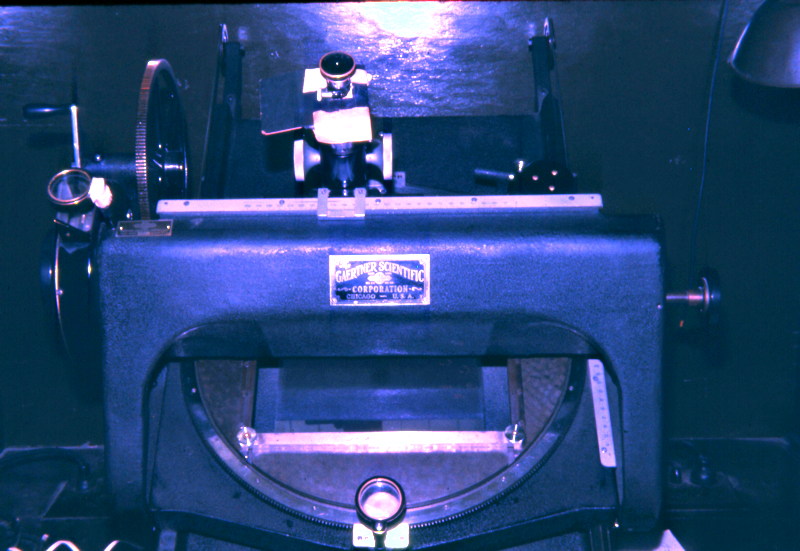Asteroid Kirkwood, Asteroid Kitt Peak
Posted: 17 October 2020
Friday, 16 October 2020, was clear but there was some thin smoke in the sky from Arizona wildfires.
|
Open: Friday, 16 October 2020, 1808 MST Temperature: 79°F |
Session: 1540 Conditions: Mostly clear, some smoke |
Equipment:
12" f/8 LX600 w/StarLock
2" 24mm UWA eyepiece
Camera:
D850 DSLR
1813 MST: LX600 ON, StarLock OFF, High Precision OFF.
Viewed Jupiter and 3 moons, then Saturn and 1 moon, 102X.
1818 MST: relaxed on the observatory patio bench while waiting for the sky to get darker. After a busy morning of errands I decided to just enjoy my dark night sky. I did some observing using 12x50 binoculars while listening to music from the "Hearts of Space" on my iPod.
2017 MST: back inside the observatory. Did some observing using the William Optics Binoviewers, 122X, through the 12" telescope. Viewed Jupiter and the four Galilean Moons, Saturn and 2 moons, M57 (Ring Nebula), and M27 (Dumbbell Nebula). The Dumbbell Nebula appeared almost 3D and seemed to be floating in space (which in fact it is). Then viewed M13 (the Great Globular Cluster in Hercules). Next was Mars. Wow, awesome view. The North Polar Hood and the small South Polar Ice Cap were clearly visible. I wish I had thought to use the Binoviewers when Mars had its close approach the previous week. I added the 1.6X Barlow Lens and viewed Mars, 195X. Nice view. Lastly, viewed M31 (Andromeda Galaxy) and its satellite galaxies M32 and M110, 122X.
Viewed M31, 102X.
My main objective for the night was to image Asteroid (1578) Kirkwood (Mag. +15.0) and Asteroid (2322) Kitt Peak (Mag. +16.2). I fell in love with asteroids as an undergraduate astrophysics student at Indiana University. In 1966, as a freshman, I worked on the IU Asteroid Program. I was on the Program for four years and even worked there full-time during the summer after graduation in 1970. I was one of several students who would measure star and asteroid positions on 8x10 inch photographic glass plates using the Gaertner Measuring Engine.

The plates were taken using one of the telescopes at Goethe Link Observatory, which was operated by IU at the time. I visited the Observatory only once as a student and that was a very short visit.
After waiting a short period on the bench while waiting for Asteroid Kirkwood to rise higher in the eastern sky, I mounted the D850 DSLR at prime focus + focal reducer, focused on the star Hamal using the Meade Bahtinov Mask, and locked the 12" primary mirror.
2114 MST: Meade Stella Wi-Fi Adapter ON.
Oops, SkySafari 6 Pro, which I had planned to use to GOTO to the asteroids, would not connect to the Wi-Fi adapter. The iOS app ScopeBoss was able to make a successful connection, so the problem seemed to be with SkySafari. Will troubleshoot the app on a future session. Stella OFF. Used SkySafari for the position of the asteroids and manually entered the RA and DEC into the AutoStar.
I took StarLock autoguided images, 5 minutes, ISO 6400, at one hour intervals of each asteroid. I relaxed on the bench between exposures to enjoy the night sky. These are the resulting images.
Asteroid (1578) Kirkwood (Mag. +15.0)


Asteroid (2322) Kitt Peak (Mag. +16.2)


Photographing asteroids that are named for people and places that I know has become an obsession with me and I am thrilled to have added Asteroid Kirkwood and Asteroid Kitt Peak to my collection of images on my Asteroids & Dwarf Planets album. Asteroid Kirkwood is named for Daniel Kirkwood and Kirkwood Observatory on the Indiana University Bloomington, Indiana, campus is named for Daniel Kirkwood. As during my senior year at IU I spent many nights in Kirkwood Observatory using the 12" refractor. Asteroid Kitt Peak is, of course, named for Kitt Peak National Observatory. I have had several opportunities to visit Kitt Peak and look through the WIYN 3.5m telescope that is operated by Indiana University (and others).
2347 MST: LX600 OFF.
2358 MST: took a Sky Quality reading using the Unihedron SQM-L. Reported the results to Globe at Night. The errant light beam that I saw shining up into the northern sky on the previous night was not visible this session.
|
Close: Saturday, 17 October 2020, 0006 MST Temperature: 72°F |
Session Length: 5h 58m Conditions: Clear, SQM 21.11 |
I have posted my review of the Sensei Filter Step-Down Rings.
Comments are welcome using Email. Twitter users can use the button below to tweet this report to their followers. Thanks.
Cassiopeia Observatory Home Page
Copyright ©2020 Michael L. Weasner / mweasner@me.com
URL = http://www.weasner.com/co/Reports/2020/10/17/index.html
